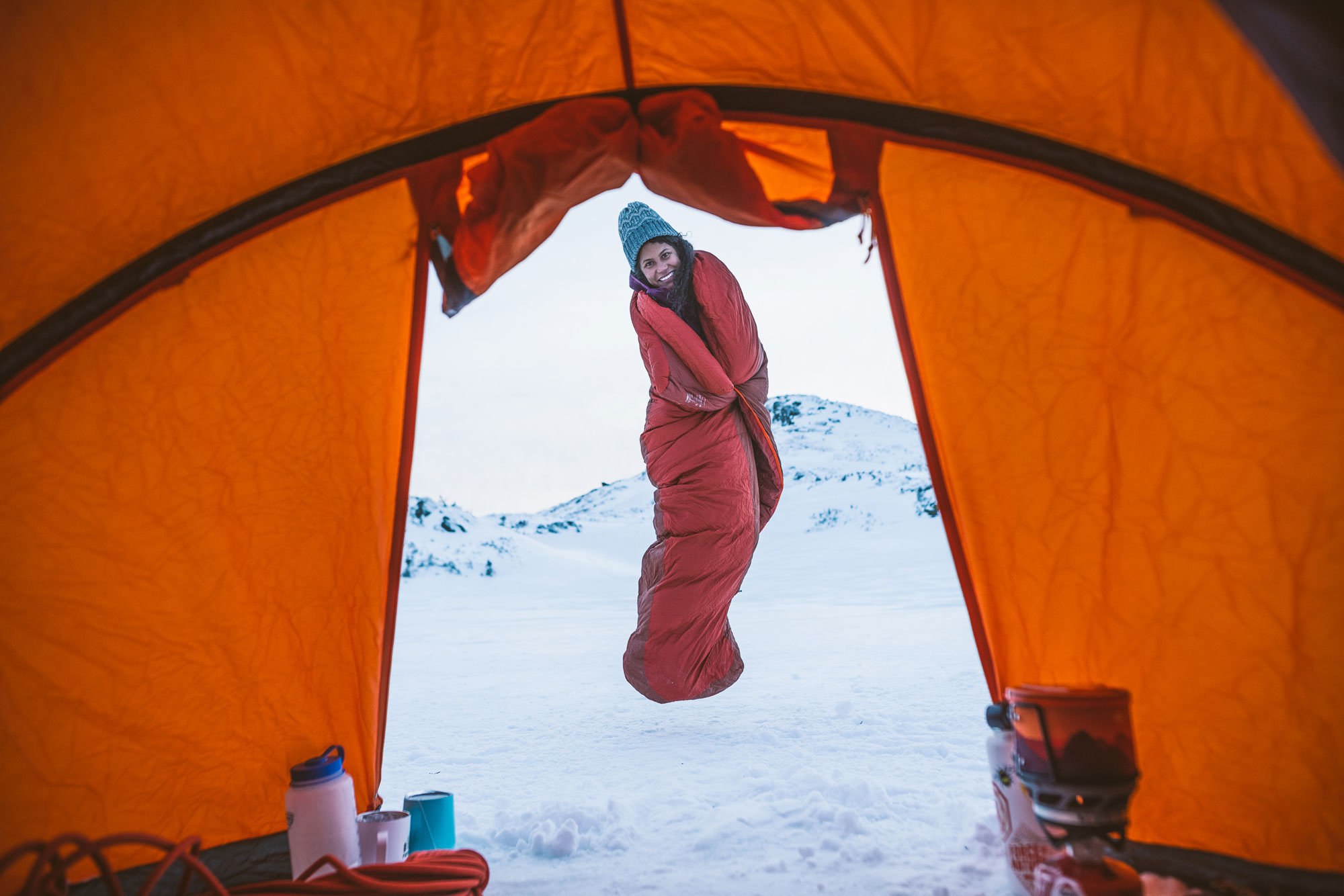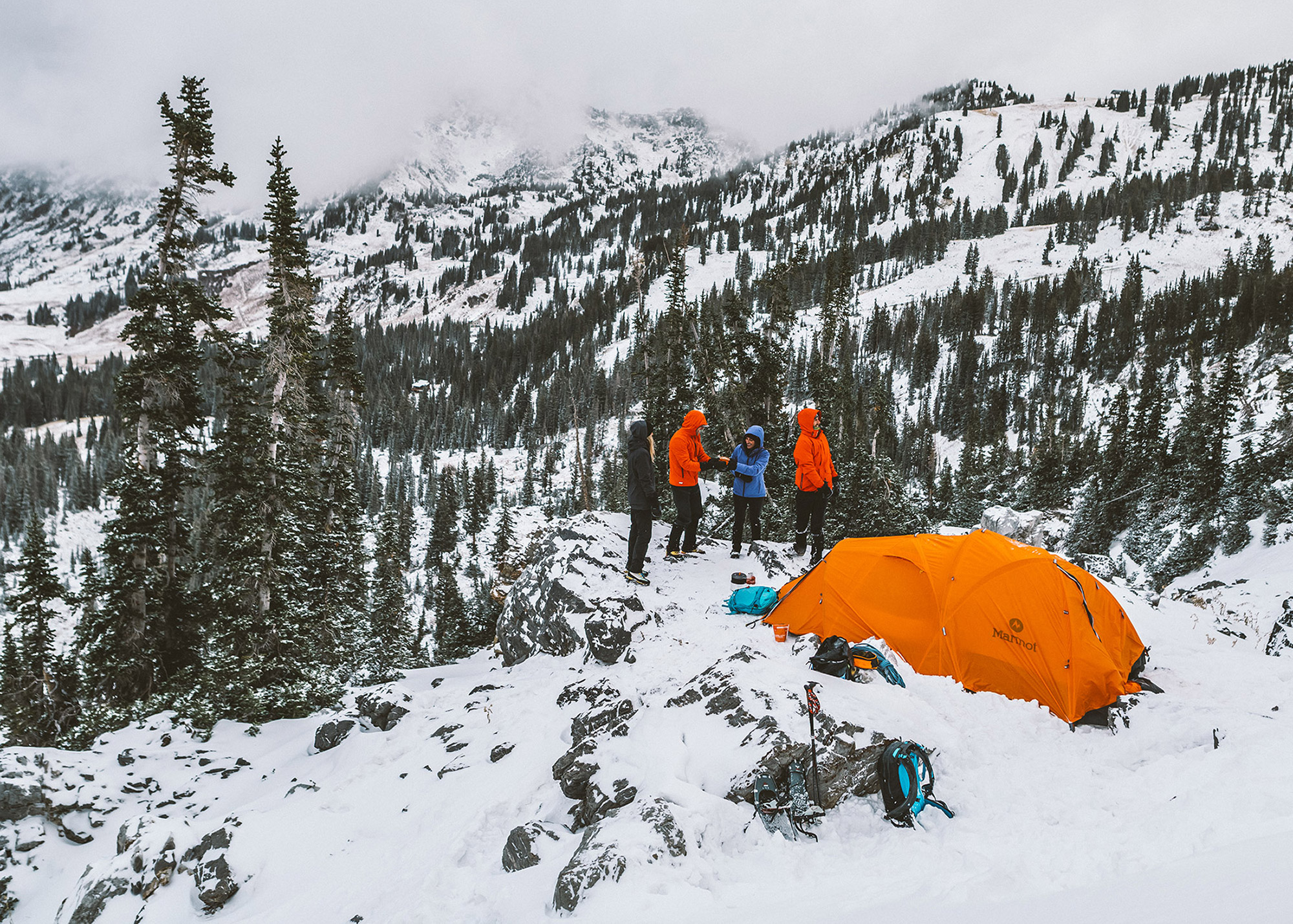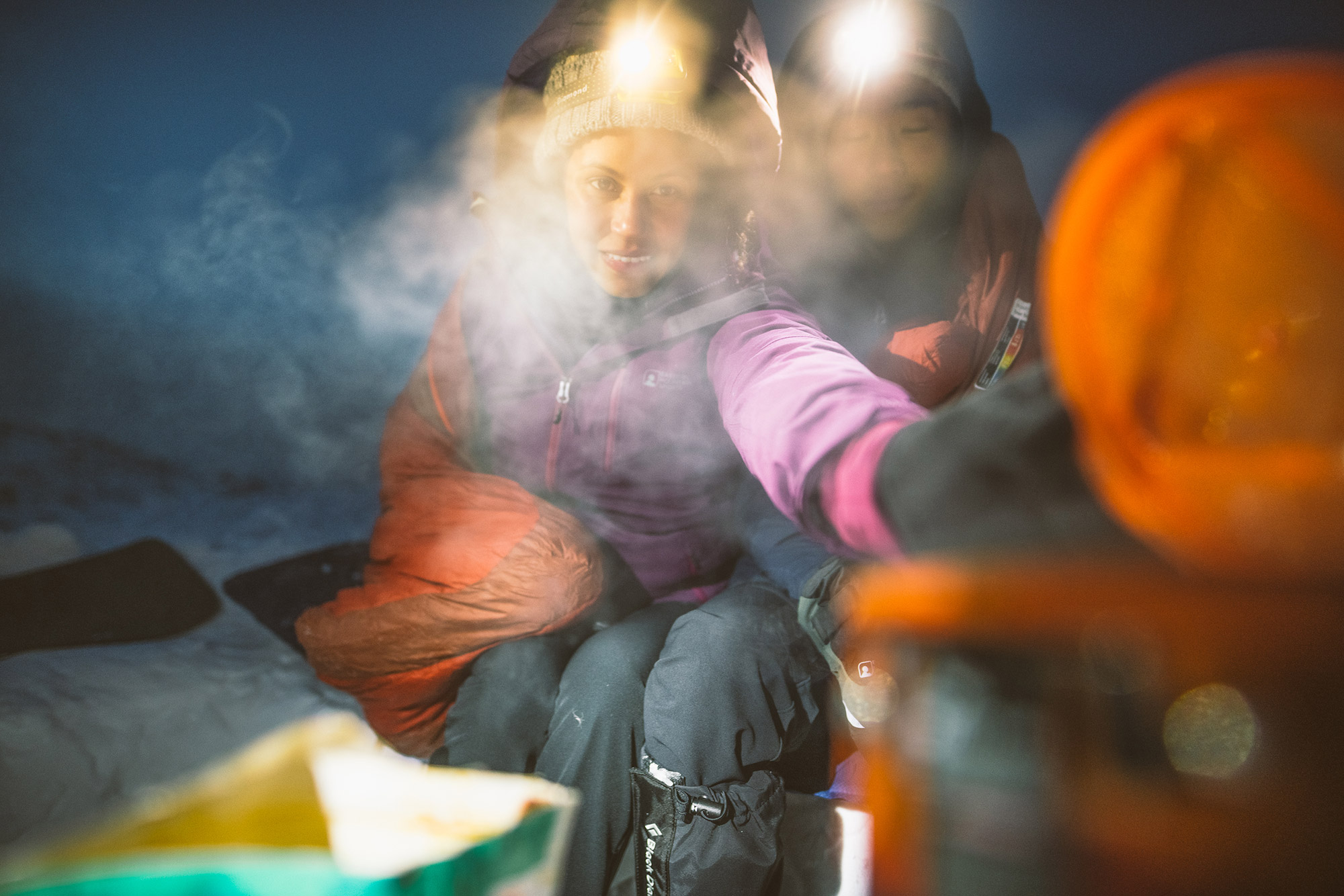There’s nothing worse than heading into the backcountry with an inadequate sleep setup. Not only can the wrong gear make you uncomfortable, but it can also become dangerous. Luckily, it’s possible to take a number of steps to enhance the warmth of your sleep system to avoid those uncomfortable low-temperature nights, even in the colder months. While it will definitely make things a little easier, you don’t necessarily have to invest in winter gear in order to be able to camp during the shoulder season. By taking the following steps before heading to the great outdoors, you may better prepare yourself for the chilly shoulder season.

1. Evaluate the Sleeping Bag Rating
When you’re getting ready to make your sleeping bag purchase, it can be helpful to familiarize yourself with the temperature rating system. Most sleeping bags will come with two temperature ratings: the comfort rating, and the survival rating. The comfort rating is the bottom temperature at which most people will be comfortable, while the survival rating is the lower temperature at which you’ll survive. You’ll want to make your selection based on the comfort rating for best results.
Additionally, this temperature standard is supposed to act as guidance but it shouldn’t be treated as a rule. If you know that you tend to sleep warm, you may be able to get away with a sleeping bag that a cold sleeper wouldn’t be able to manage. And if you tend to sleep cold, chances are that you’ll need a warmer rating than the next guy.
If you’re worried about your sleeping bag’s lower limits, check the local temperatures before you head out for your trip. If they’re closer to the survival range than the comfort range, it may be time to upgrade systems.

2. Cinch the Head and Neck Area
Most sleeping bags come with a cinch that can close the head and neck area for additional warmth. Although this is often an overlooked feature, keeping this area closed can allow your sleeping bag to trap heat more efficiently, which ultimately leads to better warmth.
3. Enhance the Heat with a Liner
A sleeping bag liner can be a good investment for those who just need a few more degrees of warmth. The average sleeping bag liner can easily add about 10 to 15 degrees of warmth to your system. More extreme sleeping bag liners may be capable of adding up to 25 degrees of extra warmth to your system, which can easily make the difference you need to stay comfortable and safe in the backcountry.
In addition to providing added warmth, sleeping bag liners allow you to keep your sleeping bag clean for longer. This can ultimately contribute to a longer lifespan for your sleeping bag.

4. Use a Hot Nalgene for Added Toe Warmth
If you’re expecting to experience a particularly chilly night, it may be helpful to create a bit of extra heat. One thing that you can do is boil a liter of water, add it to your Nalgene water bottle and stuff it in your toe box. Typically, the Nalgene will stay warm all night. And the added warmth can be just enough to get you through the chilly nights without a hiccup. Really cold? Try tucking it between your thighs—The warmth against your femoral arteries will circulate throughout your body.
5. Level Up Your Sleeping Pad
One common beginner mistake is to overlook the power of your sleeping pad. While sleeping bag ratings are certainly important, if you’re not able to effectively insulate yourself against the ground, your sleeping bag won’t be able to do its job.
In the same way the sleeping bags have temperature ratings, so do sleeping pads. Sleeping pads exist on a spectrum of 0 to about 5.5. The R-value allows you to determine how effectively your pad will insulate you from the ground. A 0, for example, would provide almost no insulation, while a 5.5 would provide you some of the best insulative properties. Finding a sleeping pad with a higher R-value can help you to increase the efficiency of your sleep system. Read more about sleeping pad R-values here.
6. Care For Your Sleeping Bag
Keeping your sleeping bag clean, it’s loft full, and it fully maintained is not only going to prolong the life of our bag, but keep it warmer. Dirty insulation won’t loft as much, and it won’t stay as warm. Clean your sleeping bag regularly.
Mary Beth Skylis
Mary Beth began her journey in the outdoors while thru-hiking the Appalachian Trail in 2015. She soon went on to backpack the Colorado Trail, and part of Nepal's Annapurna Circuit. Today, she resides in North Carolina where she can commonly be found rock climbing, surfing, or backpacking. Some of her recent work can be found in Outside and Backpacker Magazines.




